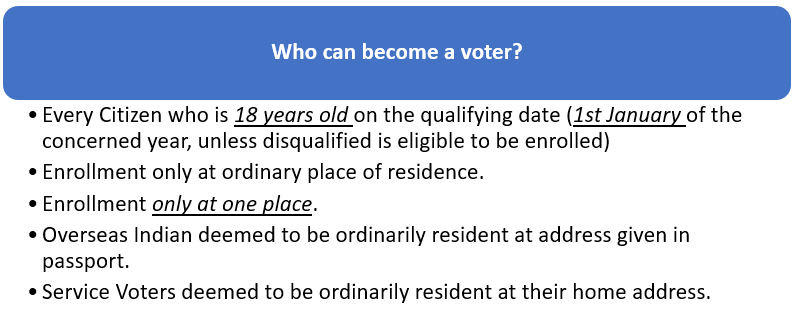Mains: GS2 - powers, functions and responsibilities of various Constitutional Bodies. Government policies and interventions for development in various sectors and issues arising out of their design and implementation.
Recently, the Supreme court’s remark on ‘right to vote’ has cast a spotlight on the foundational processes of India’s electoral machinery and the genesis of India’s ‘universal adult suffrage’ (UAS).
Free and fair elections is part of the basic structure of our Constitution as declared by the Supreme Court in various cases and in this regard, the right to vote is granted to all citizens who are 18 years of age or older.
The voting age for elections to the Lok Sabha and State Legislative Assemblies was lowered from 21 to 18 years old by the 61st Amendment Act of 1988.

During Constitutional Debates, B.R. Ambedkar and K.T. Shah proposed adding ‘right to vote’ in the fundamental rights part but the Constituent Assembly’s Advisory Committee rejected the idea.
The Election Commission used election symbols and other innovations to empower millions of illiterate voters. Nearly 173 million largely illiterate voters enrolled in electoral rolls because of EC’s efforts.
Gerrymandering means manipulating district boundaries to favor a particular political party or group, skewing representation.